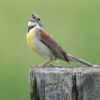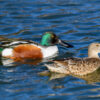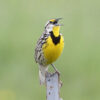By: Jean Favara
The ongoing Covid-19 pandemic currently impacts all of us in a variety of ways. The economic effects are deep, and many continue to lose their jobs. Covid-19 has touched every corner of our world and will reverberate for years to come. We are now mainly focused on how to keep ourselves, family and friends safe and healthy, and that is the right thing to do during this crisis.
I struggled on how to write about bird safety in this new world. I don’t want to minimize our current struggles, and yet I know we cannot ignore the challenges that our feathered friends face constantly in our shared world. These challenges will continue to grow as we increase our footprint and can’t be mitigated by a vaccine or social distancing. We are witnessing steadily decreasing bird populations due to predation by free-roaming cats, deadly impacts with glass and buildings, use of pesticides, and light pollution that causes birds to lose their way during migration. One recent publication (Loss et. al, Annual Review Ecology, Evolution and Systematics, 2015) estimated that 365 to 988 million birds are killed in building collisions alone in the U.S. annually.
St. Louis Audubon Society is tackling these challenges through our ongoing projects such as Bring Conservation Home and Cats and Birds. These projects provide concrete actions you can take to foster healthy bird populations in your community. In addition, we have recently launched our BirdSafeSTL project, which focuses on how both commercial and residential buildings and landscapes can be made safer for birds. To initiate this project, we plan surveys to map bird mortality rates in downtown St. Louis. These surveys will focus on the migration periods in the spring and fall. If you are interested in becoming involved with this project, please contact St. Louis Audubon Society and use BirdSafeSTL project in the subject line of your email.
Keeping birds safe in this new world will require a united effort from many people. It is a challenge that is easy to ignore but should not be brushed aside. The health of our human communities is directly tied to the health of the birds, insects, and other wildlife that share our communities. Where to start? Read Mary Dueren’s article in this edition of Tale Feathers titled “How to Prevent Window Strikes at Your Home or Business.” Learn about the concrete actions you can take in your own home or business to protect birds from collisions with glass.
I am confident that by applying science, following recommended safety measures, and caring for ourselves and others throughout all our communities, we will eventually emerge from the Covid-19 pandemic with new perspectives. Our united effort to meet this challenge may guide us into a safer future for everyone. But let’s not forget about the birds on our way to that new future.




